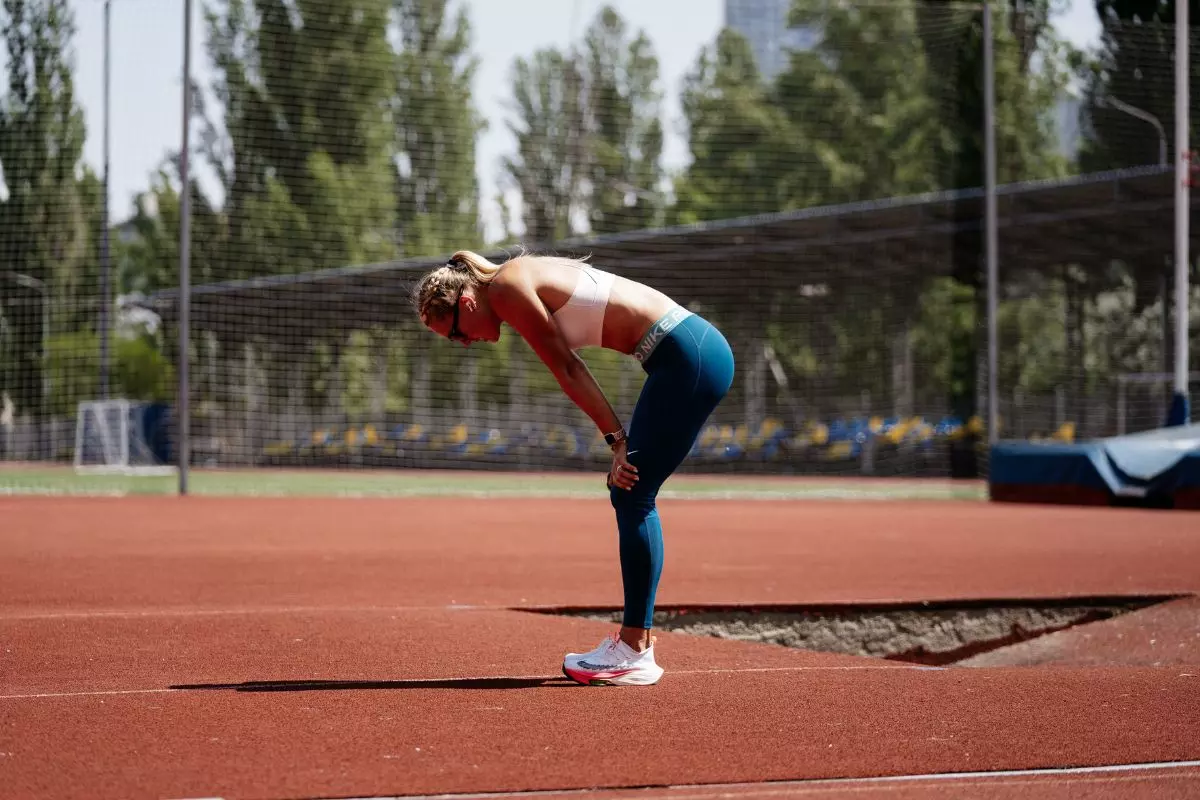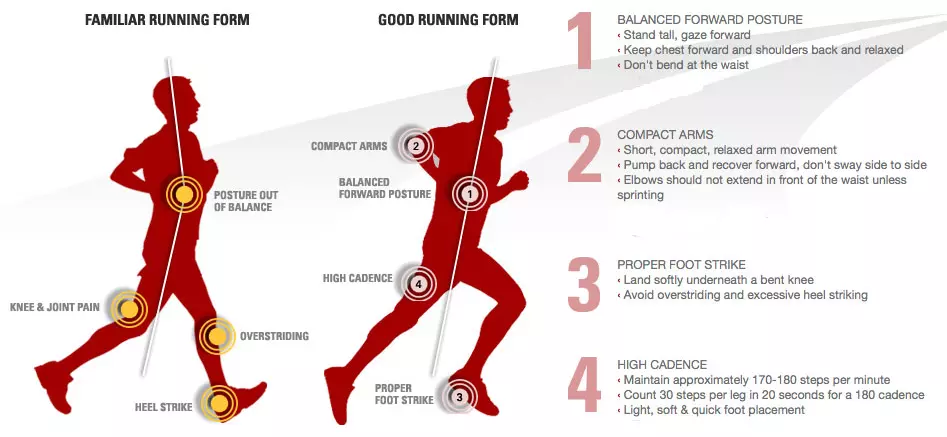Running with Sore Legs: 4 Tips How To prevent Leg Pain
Having sore legs can be tricky for athletes. Pain or discomfort in your feet after exercise is common and often caused by muscle fatigue, dehydration, overuse, or an injury.
This guide will show you how to identify when it’s safe to run with sore legs and when to take a break from running. We’ll also provide tips on reducing the recovery time and alleviating pain so you can stop asking yourself, “Should I run if my legs are sore?” Want to know more? Let’s dive in!
Can I run if my legs are sore?
It may be uncomfortable and even painful to run while having sore legs, depending on the reason for the leg pain. If it results from overtraining and muscle soreness, you can eliminate it with stretching, ice, rest, and other simple tips.
Running with Sore Legs
Soreness in the legs after running can have both temporary and more permanent causes. Short-term soreness is usually caused by Delayed Onset Muscle Soreness (DOMS). This type of intense muscle fatigue occurs as a result of unfamiliar or strenuous exercise but does not necessarily indicate injury.
Continuing to run when your muscles are sore from DOMS is generally safe and might even be beneficial, as long as you keep track of any pain or tightness in your lower body that persists for an extended period.
However, leg pain should be taken seriously since it may be caused by a more serious issue that may require medical attention. Let’s discuss them in more detail.
5 Causes of Sore Feet in Runners
Let’s discover the five main causes of running on sore legs:
1. Overuse and Overtraining
Overuse and overtraining are common causes of sore feet in runners, which occur when athletes don’t allow for sufficient recovery between workouts. It can lead to muscle soreness above and beyond normal pain associated with running.
Working out too hard or too often can push the body beyond its physical limits, putting you at risk of developing injuries or potentiating existing ones, including sore feet. Training errors, such as trying to do too much before your body is fully adapted to running, increase the risk of cumulative damage since it overloads the muscles and other structures.
2. Muscle Fatigue and DOMS
These are common phenomena experienced by runners, which involve muscle tenderness and pain after physical exercise. While the exact cause of delayed onset muscle soreness (DOMS) is not fully understood, it’s thought that exercises damage the muscle fibers causing temporary inflammation and micro trauma to the muscles.
This often results in a feeling of tightness or soreness 12 to 24 hours after a workout which can last for up to 72 hours. The effects on athletic performance are still unknown but may include decreased strength, slowed reaction time, altered psychological state, and increased risk of injury.
3. Dehydration
Dehydration can significantly affect your performance and should be taken seriously. Reductions in blood flow to exercising muscles caused by lack of hydration can lead to decreased pressure, resulting in sore legs, extreme pain, redness, swelling, and tenderness.
General fatigue, similar to iron deficiency, is also experienced due to dehydration along with muscle cramps and soreness, as the body has not been able to cool down properly.
4. Muscle Strains
Muscle strains are a common injury experienced by many runners, often leading to sore legs. The most frequent cause of these injuries is overtraining and inadequate warm-up. When muscles do not receive sufficient time to rest after exercise, they become fatigued, and this can lead to tears or pulls when the body attempts further exertion – leading to intense pain while running.
5. Leg Injuries
Common leg injuries experienced by runners are mostly from overuse, improper recovery techniques, inadequate warm-up and cool-down routines, dehydration, or lack of strength training.
Shin splints refer to a broad range of lower leg pain caused by stress on the shinbone and muscles around the tibia that support it. Achilles tendinopathy is another common injury among endurance athletes, which generates pain along the tendon connecting your calf muscles to your heel bone. Plantar fasciitis is an inflammation of thick tissue in your foot that connects your toes with the heel bone creating sharp pains at both ends when stepping with sore feet.
Should I Run with Sore Legs?
Is running with sore legs bad? It’s important to understand when you should push through the pain and when it’s time to rest in order to reap the health benefits of running without risking injury.
Consider light stretching or low-impact activities like swimming or elliptical machines to reduce discomfort when sore. For a full workout, aim for shorter distances and slower paces and allow time for extra rest periods in between sets.
Make sure to begin your run with a 5-10 minute warm-up to activate the muscles before engaging in strenuous activity. Lighten your load while training by using lighter weights or fewer reps during strength training workouts.

When It’s Beneficial to “Push through the Pain” and when It Isn’t Safe
Running when your legs are sore can be a tricky business. While pushing yourself to reach your running goals is important, intense discomfort is a sign that something is wrong.
It’s very important to keep your body tuned in and listen for any signs while running. If you experience sharp or regular pain, stop your run and seek medical attention if necessary.
Pushing through some temporary discomfort or muscle fatigue may actually benefit your overall recovery. However, pushing beyond what your body can handle can lead to further damage and injury down the road.
Is it Ever Safe to Keep Exercising through the Pain?
You should generally avoid exercising through pain. When your body is sore, it’s a sign that you have overworked your muscles and may need to rest or take a break.
Continuing to push yourself when in pain can worsen an existing injury or create troubles like tendonitis. It’s vital that you pay attention to warning signals like fatigue, exhaustion, and dizziness while exercising. If something doesn’t feel right, trust your intuition and consult a doctor as soon as possible for the right diagnosis.
Once the cause has been identified, the doctor might advise against continuing exercise or suggest incorporating anti-inflammatory treatments such as icing along with stretching exercises into your recovery routine.
When Should You Not Run with Sore Legs?
If your legs feel sore and you are in pain, then it’s important to understand that running may not be the best option for you. If there is localized discomfort or if the pain intensity increases as you run, then it would be advisable to take a break and rest until the pain subsides.
It’s also wise to consult a doctor if persistent or worsening pain occurs – while muscle soreness can be a temporary result of exercising, these symptoms could also indicate an underlying condition requiring further medical attention.
Additionally, taking regular breaks between long-distance runs will help avoid any bouts of overtiredness, which could also lead to injuries.
6 Ways How to Deal with Leg Pain After Running
There are several strategies to reduce and manage post-run muscle soreness. Let’s take a closer look at how to deal with sore legs after running.
1. Incorporating Anti-Inflammatory Foods
Adding anti-inflammatory foods to your diet can help reduce leg pain after running and aid in muscle recovery. Foods like fatty fish, ginger, turmeric, avocados, green tea, and berries can have anti-inflammatory properties, which can drastically reduce soreness.
If you are dealing with regular leg pains post-run or on weight training days, incorporating anti-inflammatory foods may provide some relief and prevent further injury.
2. Proper Hydration
An adequate intake of water is essential for you before, during, and after exercise. Water helps to flush out toxins from the body post-run, maintain muscle temperature, lubricate joints, deliver nutrients throughout the body, and keep tissues hydrated while running.
Hydration plays an important role for all athletes. Not only does it help boost your performance by increasing oxygen delivery, but it also keeps in check any electrolyte imbalances that can lead to dehydration or cramping and reduces overall leg soreness after a run.

3. Post-run Stretches and Cool-downs
Running on sore legs can lead to complications, so you need to understand how to properly cool down and stretch after completing runs. Static stretches after running can help relieve tight muscles and increase flexibility, while dynamic stretching is also beneficial as part of an active or warm-down.
A few post-run stretches that are great for reducing muscle soreness include hamstring stretch, quad stretch, calf stretch, low lunge stretch, IT band stretch, butterfly twist, and hip flexor exercises.
4. Use of Ice or Cold Compresses
Ice is an effective way to reduce inflammation and discomfort caused by leg pain after running. Icing helps numb sore spots, reduces swelling of the muscles, and decreases muscle tightness.
It also helps flush out metabolic waste that can accumulate in inflamed tissues. Try cold compresses on a localized area for at least 15 minutes up to several times daily or as often as needed for pain relief.
Subscribe to Our Running Newsletter!
Get free running tips from renowned professional athletes and discounts from top-notch brands.
5. Cross-training and Low-impact Exercises
These activities help maintain good form while reducing stress on the legs, allowing muscles to recover and become stronger. Suitable cross-training exercises include running in a pool, cycling, swimming, using an elliptical trainer or stair climber machine in a gym setting, and walking outdoors.
Additionally, incorporating yoga and Pilates into your routine can also help stretch tight or sore muscles to aid recovery from sets of runs.
6. Adequate Rest and Recovery
Rest and recovery are crucial after running if you have sore legs, particularly after hard runs. Allowing the body to rest will help it heal properly and reduce further muscle and bone damage.
After a long run or strenuous workout session, it’s important to incorporate various forms of recovery to address soft tissue injuries like muscle sprains or ligament tears.
Restorative activities such as stretching, walking, swimming, or light resistance training can promote recovery. If available, you can also try foam rolling, massage therapy sessions, and compression clothing where relevant.
4 Tips to Prevent Leg Pain During Running
Here are the most beneficial tips for running with sore legs.
1. Warm up before running
It’s essential that runners warm up before starting a run, as adequate warm-up exercises help loosen joints, improve blood flow to the muscles, and reduce the risk of injuries. A proper pre-run routine should include slow, dynamic, and sustained stretches, particularly focusing on stretching the thigh muscles.
2. Adjust Your Running Route
Runners often don’t consider how the terrain of their running route can affect their leg pain. Different terrains, inclines, and surfaces will impact your leg muscles and joints differently.
Flat roads are more forgiving than technical trails or steep-graded hills. Flat routes that involve pavement tend to be easier on the legs as they provide a consistent surface for runners to push off from with every step.

Pro Tip:
Rough terrain or hilly roadways should be avoided when possible to help reduce muscle strain and fatigue throughout your run – particularly if you have pre-existing soreness in your feet or legs.
3. Adjust Your Stride
Adjusting your stride while running can be a great way to reduce injury risks. Poor form and overstriding can cause the shin, ankle, and calf muscles to be overworked, resulting in great stress on the knees and hips.

Pro Tip:
One of the best ways to adjust your stride is by focusing on proper technique and landing with a mid-foot strike instead of heel striking. This helps absorb shock from the impact more effectively without putting extra strain on some muscle groups like calves, shins, or ankles.
4. Focus on Proper Running Form
Engaging your core and using gravity to propel forward instead of putting too much strain on the lower legs can help maintain good form during a run. Additionally, focusing on hip hinges (glute activation) while running as opposed to pushing off with your forefoot will protect you from shin splints that are caused by excessive force placed on the calf muscles.

4 Tips How to Prevent Leg Pain after Running
We’ve discussed how to prevent leg pain during running. But how can you prevent it after your running workout?
1. Stretch Your Leg Muscles
It’s essential to stretch major muscle groups and target any tight areas or minor aches before a run to avoid discomfort after exercise. Simple calf stretches can be extremely beneficial for runners and those running with sore legs from squats, for example.

Pro Tip:
Additionally, rolling out nagging injuries or problem areas can aid recovery by improving blood flow throughout the body. Finally, a gentle flexibility workout done immediately after a run helps relax tired muscles, restoring them to their normal state faster than resting.
The video presents a light workout that helps improve the condition of muscles before or after running. It helps reduce the risk of injuries and enhances muscle flexibility and elasticity, contributing to a balanced and effective training routine.
2. Rest and Allow for Recovery
Following a hard run, giving the body time to heal and repair muscle damage is essential. Resting between runs allows muscles to rebuild tissues that have broken down during an intense workout. Without proper rest in between, it can lead to overtraining or other injuries that are painful and easily preventable through adequate recovery methods.
3. Massage Your Legs
Getting a leg massage after running can work wonders in relieving sore, tired muscles and promoting tissue repair. It can also help with running with sore muscles from weight training. For runners who experience intense muscle soreness post-run, light-pressure massages may help reduce that pain.
Since the front of the thighs tends to get especially fatigued during long runs, spend some time massaging them as well. The massage will provide immediate relief from DOMS and help stimulate blood and oxygen flow within your legs for better recovery in-between workouts.
4. Check for any Injuries or Underlying Conditions
Even if you don’t think that a specific injury could be the cause of your sore legs, it’s still important to check for any underlying conditions. Issues like runner’s knee, stress fractures, shin splints, muscle strains, or joint pain can all easily be ignored.
Ignoring these issues may result in more long-term damage than necessary. On the other hand, seeking help early on can mean better overall recovery time. A visit to your primary healthcare provider or even a physiotherapist can help assess the severity of an issue and provide specific advice on how to manage it best.
Frequently Asked Questions about Running with Sore or Aching Legs
Can I Run with Sore Calves?
The short answer is no; it’s not advised to run with sore calves. Troublesome calf pain when running can be caused by several factors, such as muscle fatigue, dehydration, or strained muscles. In most cases, taking a day off from running and providing sufficient rest for your legs should improve symptoms associated with stiff calf muscles.
Why do my Legs Hurt after Running for the First Time?
One of the main reasons you may experience leg pain after running for the first time is due to delayed onset muscle soreness. Other potential causes behind sore legs include overtraining, muscle fatigue, dehydration, or muscle strains due to improper warming-up or running form.
How do I Make my Legs Less Sore when I Run?
One way to reduce leg soreness when running is to warm up properly. Additionally, adjust your running form by focusing on landing with a mid-foot strike while remaining relaxed in your arms and shoulders. Shorter strides are better than longer ones since they place less stress on the muscles of the feet and lower leg, leading to fewer aches afterward.
Final Thoughts
Ultimately, proper rest and recovery are essential for safe running on sore legs. When muscles become fatigued from overuse or overexertion during a run, listen to your body and adjust accordingly. To find out an answer to the question, “Legs sore after running – should I run again?” – ask yourself the quick checklist questions: Am I properly hydrated? Is my form good? Am I feeling tightness too soon? These questions will help you decide whether you should continue running.
Allowing sufficient time for recovery between runs ensures you don’t overwork your leg muscles, as this can cause them to become weak and suffer injuries without realizing it until it’s too late.
With proper care, rest, nutrition, and listening closely to your own body, you can prevent leg pain and run safely.
Do you continue running when legs are sore? Please share your experience in the comments below.
Also read:
- Best Visor for Running
- Running With Achilles Tendonitis
- How Cold Is Too Cold to Run
- Best Running Shoes for Heel Strikers
- Best Adjustable Weighted Vest for Running
- What to Wear Running in 40 Degree Weather
- 8 Week 10K Training Plan
- Beans for Runners
- Creatine for Runners
- Best Running Rain Jackets
References:
- 10 Common Running Injuries: Prevention and Treatment // WebMD: https://www.webmd.com/fitness-exercise/running-injuries-causes-prevention-treatment
- Runner’s Recovery Routine // EW Motion Therapy: https://www.ewmotiontherapy.com/blog/runners-recovery-routine
- Anti-inflammatory diet: What to know // Medical News Today: https://www.medicalnewstoday.com/articles/320233
- Quick Fixes for Sore Muscles // Everyday Health: https://www.everydayhealth.com/fitness/quick-fixes-for-sore-muscles.aspx
- Running and jogging – preventing injury // Better Health Channel: https://www.betterhealth.vic.gov.au/health/healthyliving/running-and-jogging-preventing-injury#safety-tips-for-running-and-jogging
If you have any questions or suggestions, you can contact us via email – [email protected]






